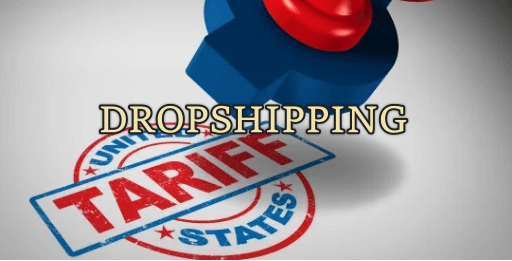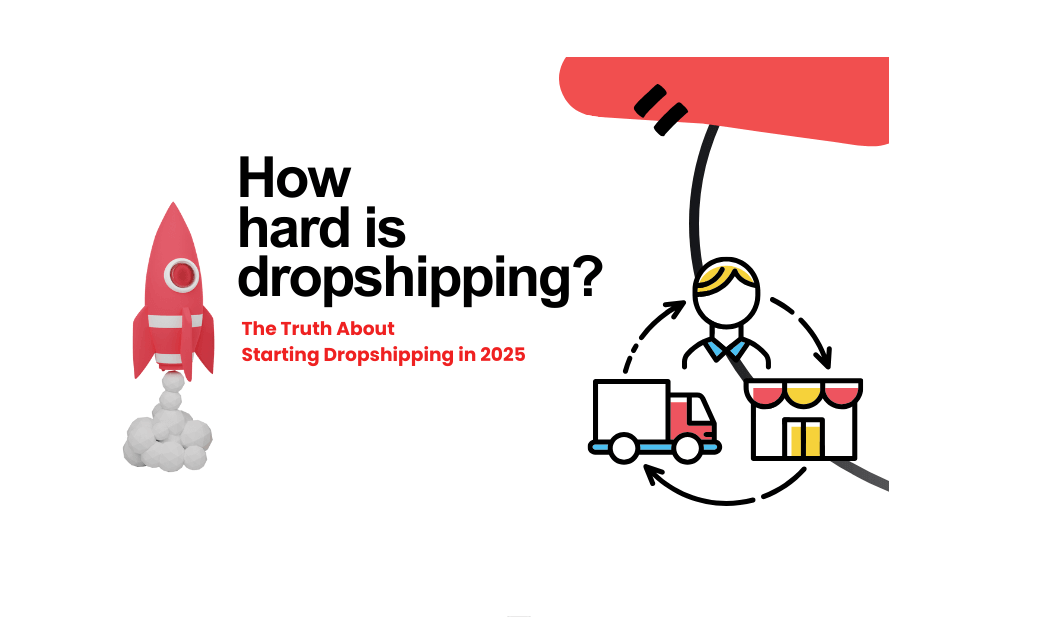Dropshipping. The business model highly talked about in online entrepreneurial circles. Sure, it looks promising when you hear all the success stories. But, you can only get the full picture by understanding the pros and cons of dropshipping.
Below, we look at the main benefits and drawbacks of this approach, along with the steps to make a successful dropshipping store.
What is dropshipping?
Dropshipping is a different method of online selling. You don’t stock what you sell — instead, you list items in your online store, and when someone buys, you order it from your supplier. They send it directly to your customer.
It’s not the usual buy-and-hold way of running an online shop. And it’s not a magic ticket to easy money, either. You’re juggling orders, dealing with suppliers, and handling customer questions.
But, if you’re up for the challenge, dropshipping can grow into a solid business.
How does dropshipping work?
Dropshipping involves four key players: the manufacturer, the supplier or wholesaler, you (the retailer), and the customer.
Here’s how these parties make dropshipping work:
- Manufacturers make the products, then sell them to suppliers or wholesalers.
- As a retailer, you pick these products and list them in your store.
- A customer orders from your store.
- You send this order to your supplier. They pack it up and ship it directly to your customer.
- Your main job? Ensure the customer receives their order and handle any questions or issues.
Dropshipping’s big plus? It cuts out typical store worries like stocking up or shipping. You focus more on selling and less on logistics.
Pros of Dropshipping ( 6 points )
1. Low startup costs
Starting a dropshipping store is way less costly than you might think. The big reason? You don’t need to buy a bunch of products upfront. Since you’re not stocking inventory, you dodge costs like warehousing fees.
Sure, there are some expenses to consider, like setting up your website and marketing your products. But these costs are mostly minimal and focused on growing your business, rather than just getting it off the ground.
All of this makes dropshipping one of the most affordable ways to enter the world of e-commerce. You’re investing more in building your brand and reaching customers, instead of sinking funds into product stock and storage.
2. No inventory management
One big perk of dropshipping? You don’t have to sweat about inventory. No paying for it upfront, no scrambling for storage space, and definitely no headaches over managing it. Your dropshipping suppliers have got this covered.
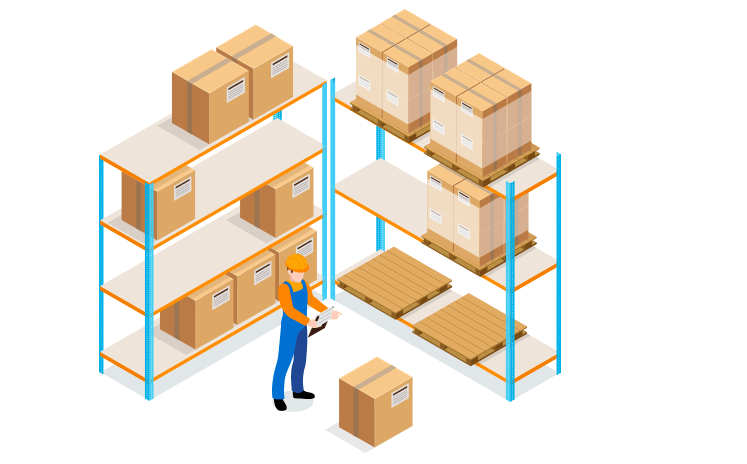
In traditional retail, you’re always keeping an eye on your stock. How much of each item do you have? When do you need to reorder? It’s a constant balancing act. But with dropshipping, if something’s out of stock, you just switch suppliers with a few clicks. Easy.
The most you’ll do? Keep tabs on your sales. Which products are hot, which need a tweak, and which ones to drop. It frees you up to focus on what matters—growing your business.
3. Flexible work schedule
In standard retail, being there physically is key to making sales. Sure, there are vending machines and self-checkouts, but they don’t fit every retail model.
Running a dropshipping store is different. Customers check out themselves, and there’s no stress about them swiping stuff off the shelves.
Plus, dropshipping makes your daily to-do list way shorter. No more fretting over inventory levels, restocking, or packing up orders. You get more breathing room in your schedule, making it easier to achieve work-life balance.
4. Choose from a wide range of products
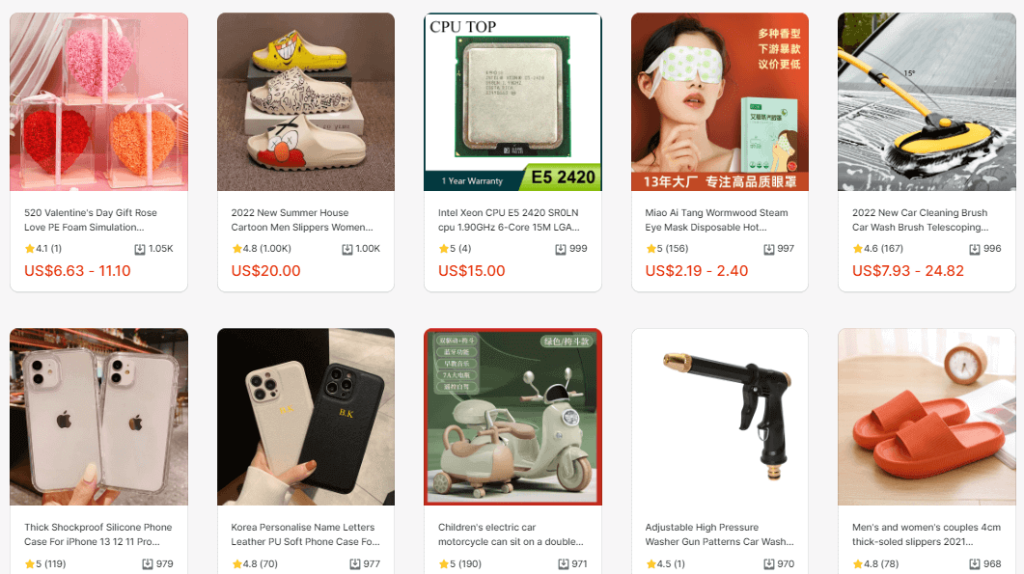
With dropshipping, you’re not tied down to any specific category — sky’s the limit. Loads of suppliers out there mean you’ve got a whole world of items to choose from, giving you the freedom to pick just about any niche.
You can sell electronics products, pet toys, children’s clothing, and more. You can also create your products via print-on-demand or sell branded merchandise via private labelling.
Plus, it’s easy to change your assortment should certain products go out of style (or start trending in certain markets.
5. More room to experiment
Dropshipping is like a playground for business ideas because it’s pretty low risk. You can switch up your product line, play with your website design, or try new marketing strategies.
In traditional e-commerce, this kind of flexibility is harder to come by. There, you’re more tied down. Changing your product line means dealing with leftover stock. Tweaking your approach can mean more upfront investment.
With dropshipping, you’re free to experiment and adapt to market changes quickly.
6. Easier to scale
Dropshipping means easy scaling — you want more products in your store? Just pick them, list them. No stress over bulk buying or storage woes.
And branching into new niches? It’s a snap. You dodge the whole rigmarole of manufacturing or chasing wholesalers.
With dropshipping, you’ve got the flexibility to adapt fast — add trending items, phase out the slow movers, and keep your store dynamic. It’s all about growing your business smart, not hard.
Cons of Dropshipping ( 3 points )
1. Lower profit margins
When you dropship, you’re buying items one by one as customers order them. This setup means you miss out on bulk buy deals and cheaper shipping. You’re paying to ship each item individually.
Selling branded products? That’s going to cost you extra. If you want your logo on the products, suppliers charge for that, and it’s usually per item.
So, expect lower profit margins than what you can get by resourcing products wholesale and reselling them at higher margins.
2. Less control over branding
In dropshipping, you often end up with ‘off the shelf’ items. These are the same products loads of other sellers might have. So, getting a unique look for your products? Not so easy.
If you’re all about having your brand stand out, dropshipping might not be your best bet. You’re mostly dealing with what’s already out there.
Print-on-demand dropshipping offers a bit of a workaround. Here, you provide designs, and companies produce and ship products per order with your design on them. But getting this done means more added costs for your business.
3. Customer service gets complicated
With dropshipping, customer service can be a bit of a puzzle. Since you don’t handle inventory or shipping, you’re sort of the go-between for your customers and your suppliers.
Here’s the deal: if a customer’s package goes missing, they’ll come to you. But you can’t fix it yourself. You need to contact your supplier or their delivery folks, then update your customer.
It’s this roundabout way of solving problems that makes customer service more complex in dropshipping.
How to make a successful dropshipping store
All successful dropshipping stores you see today were formed by regular folks. If you are interested in joining their ranks, consider these key steps:
- Choose Your niche: What are you passionate about selling? Who’s going to buy it? Lock this down first.
- Find the Right Supplier: You need a supplier who’s on the ball and has the goods you want to sell. Take your time to pick the best.
- Create Your Brand: Time to get creative. What’s your store’s name? Design a logo that pops and choose colors that speak to your customers.
- Build Your Online Store: Pick a place to set up shop. WordPress, Shopify, a website builder — any of these can get you started.
- Register Your Business: Let’s get legal. Choose your business structure and sort out those licenses.
- Sort Out Finances: Open a business bank account. Think about the pricing, keeping taxes and fees in mind.
- Promote Your Store: Now, shout it from the rooftops. Use influence marketing, social media, and other tactics to pull in customers and rack up sales.
How can Dropshipman help in dropshipping?
Dropshipman is an all-in-one dropshipping platform that connects merchants with high-quality suppliers. You can use it to streamline your sourcing and fulfillment. The solution can help you in:
- Finding trendy products: Stay on top of the game. Dropshipman spots the latest trends — you get to stock your store with what’s hot. Your customers will love the fresh finds, keeping them coming back for more.

- Finding winning products: More than just products — the real crowd-pleasers. Dropshipman zeroes in on items that have the potential to soar in sales. These are the gems that customers can’t resist, boosting your store’s success.
- Finding event products: Every event is an opportunity. Dropshipman guides you to products perfect for holidays, seasons, or any special occasions. This approach keeps your store relevant and buzzing with activity, no matter the time of year.
- Product sourcing: Professional sourcing agents source products in 100+ niches, improving your business efficiency.

- Fast order fulfillment: Professional quality check, fulfilling your order at a stable price in 3-5 days, and automating your order status updates.
Dropshipping FAQs
How to make money dropshipping ?
To make money from dropshipping, act fast and wise. Buy low, sell at a competitive rate, and make sure you’re earning enough on each sale. Also, keep an eye on the latest trends so you can quickly add in-demand products to your store and keep those sales coming.
What are the different dropshipping stores?
There are several different types of dropshipping stores, but these three are the most popular:
- Amazon dropshipping stores: These stores are basically shops set up on Amazon. You list products and when they sell, your supplier ships them. You get to tap into Amazon’s massive audience but need to play by their specific rules.
- Shopify dropshipping stores: Here, you build your store using Shopify’s platform. It’s all about picking products, customizing your shop, and using Shopify’s tools to manage sales and shipping. It’s user-friendly and gives you a lot of control over your store’s look and feel.
- Print on demand dropshipping stores: Like Redbubble, these are perfect for custom products like t-shirts, mugs, or posters. You design the products, list them, and when someone orders, your supplier prints and ships them. It’s a great way to sell custom items without needing to handle the printing process yourself.
How to set up a dropshipping store on Shopify?
- Decide what to sell: Pick a niche you’re passionate about. Tap into your interests to decide what to sell via your store.
- Set up your Shopify store: Sign up on Shopify and choose a theme that fits your niche. Customize it to make it uniquely yours.
- Source products via Dropshipman: Find products that match your niche on Dropshipman. They’ll handle the inventory and shipping, making your life easier.
- Populate your catalog: Upload your chosen products to your Shopify store in one-click. Write compelling product descriptions and add high-quality images.
- Market your brand: Use social media, SEO, and online ads to get the word out. Engage with your audience and drive traffic to your store.
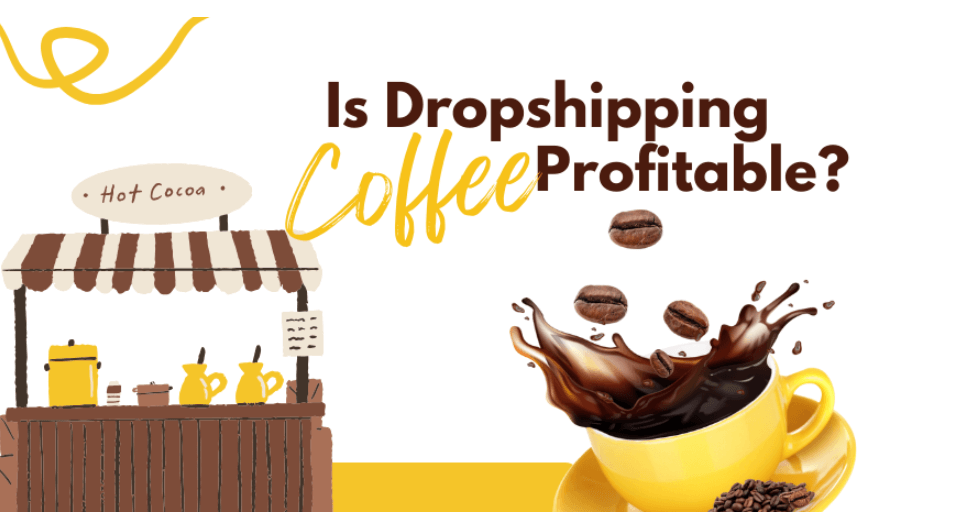
![Dropshipping General Store vs. Niche Store [2025 Data and Table]](https://www.dropshipman.com/wp-content/uploads/2025/03/general-vs-niche-store.png)
